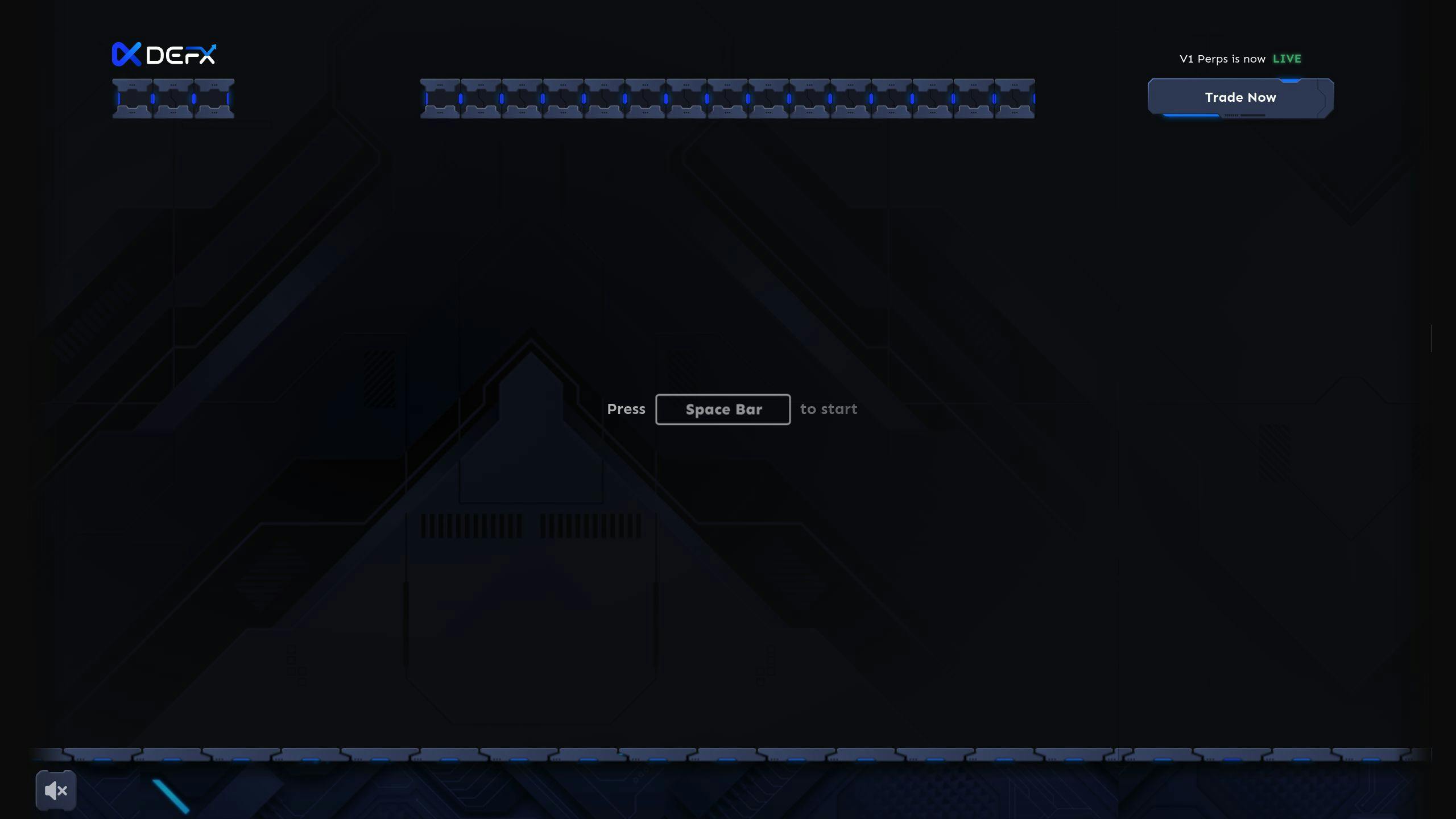Collateral in leverage trading is the money or assets you deposit to secure borrowed funds for larger trades. It acts as a safety net, protecting trading platforms from losses if your position goes against you. Here’s what you need to know:
- Why It Matters: Collateral enables you to control larger positions with less upfront capital. For example, $1,000 with 10x leverage lets you trade a $10,000 position. However, it increases both potential profits and risks.
- How It Works: The amount of collateral required depends on the leverage ratio. Higher leverage means lower collateral but higher risk of liquidation if the market moves against you.
- Managing Collateral: Keep extra reserves, track your positions, and adjust leverage based on market conditions to avoid liquidation.
- Crypto vs. Traditional Markets: Crypto trading typically requires higher collateral due to volatility, while traditional markets are more flexible. Decentralized exchanges (DEXs) like Defx use smart contracts for automated, transparent collateral management.
| Leverage Ratio | Required Collateral (% of Position) | Position Size per $1,000 Collateral |
|---|---|---|
| 2x | 50% | $2,000 |
| 10x | 10% | $10,000 |
| 20x | 5% | $20,000 |
Understanding how collateral works is essential for managing risk and maximizing your trading potential. Platforms like Defx offer tools like isolated margin and automated liquidations to help you trade more securely.
Collateral Mechanics in Leverage Trading
Understanding Leverage Ratios
Leverage allows traders to control larger positions with less upfront collateral, but it also increases the risk of liquidation. For instance, with 10x leverage, traders need to deposit only 10% of the total position value as collateral. At 20x leverage, this requirement drops to just 5%.
| Leverage Ratio | Required Collateral (% of Position) | Position Size per $1,000 Collateral |
|---|---|---|
| 2x | 50% | $2,000 |
| 10x | 10% | $10,000 |
| 20x | 5% | $20,000 |
While higher leverage minimizes the upfront deposit, it also narrows the margin for error. Keeping enough collateral is key to avoiding forced liquidation.
Margin Calls and Liquidations
A margin call happens when the collateral falls below the minimum level required by the exchange. In this situation, traders must add more funds to their account. If they fail to do so, their positions are automatically liquidated to recover the borrowed funds.
"Leverage trading can expose traders to several risks, including liquidation and amplified losses." – Bitstamp [2]
On decentralized platforms like Defx, smart contracts manage liquidations instantly and transparently. This automated process ensures that traders understand the risks and mechanics involved.
Sample Collateral Calculations
1. Basic Position Example
With $1,000 collateral and 10x leverage, a trader can control a $10,000 position.
2. Liquidation Price Example
A $10,000 long position backed by $1,000 collateral is liquidated if the asset’s price drops by 10%.
3. Buffer Against Liquidation
Increasing collateral from $1,000 to $1,500 provides a 50% larger cushion, reducing the risk of liquidation.
Platforms like Defx improve risk management with features like isolated margin trading. This setup ensures that collateral and risk are limited to individual positions, giving traders more control while benefiting from decentralized trading systems.
Complete Cryptocurrency Leverage Trading Tutorial for Beginners
Collateral Management Steps
Understanding leverage trading is one thing, but managing your collateral properly is what keeps you in the game during market swings. It’s all about maintaining control and staying prepared.
Using Collateral Efficiently
To manage collateral well, you need a plan that balances leverage and your available funds. This ensures you can trade flexibly without taking on unnecessary risks.
Here’s a quick guide to help you maintain a healthy collateral buffer based on your position size and leverage:
| Position Size | Recommended Collateral Buffer | Maximum Leverage |
|---|---|---|
| Small ($1,000-$5,000) | 25-30% above minimum | 20x |
| Medium ($5,000-$20,000) | 35-40% above minimum | 10x |
| Large ($20,000+) | 50%+ above minimum | 5x |
Platforms like Defx offer tools like isolated margin, which let you manage risk for each position separately. This way, one bad trade won’t wipe out your entire portfolio.
Position Tracking and Updates
Allocating collateral is just the first step. Keeping an eye on your positions ensures they stay in good shape. Here are two key metrics to track:
- Margin Health: How your collateral stacks up against your position size and the buffer needed for adjustments.
- Distance to Liquidation: The price movement required to trigger a margin call.
"Leverage trading can expose traders to several risks, including liquidation and amplified losses. Regular position monitoring and proactive collateral management are essential risk management practices."
Set up alerts for margin thresholds so you can act before problems escalate. When the market gets choppy, you might want to:
- Add more collateral or lower your leverage to create a bigger safety net.
- Close part of your position to reduce overall exposure.
For instance, lowering leverage from 10x to 5x by adding collateral can give you a much-needed cushion during volatile times.
Defx makes adjustments easier with its fast order matching system, allowing traders to react quickly to market changes. Plus, its transparent smart contracts give you real-time insights into your collateral needs and liquidation levels.
sbb-itb-dd9e24a
Pros and Cons of Collateral Use
Advantages of Using Collateral
Collateral in leverage trading lets traders boost their trading capacity while using their capital more efficiently. This method helps traders spread out their investments or keep funds available for new opportunities, increasing their overall market involvement [1][2].
| Advantage | Description | Impact |
|---|---|---|
| Enhanced Returns | Leverage amplifies profit potential | Greater returns on the initial investment |
| Capital Efficiency | Allocates funds more effectively across trades | More opportunities with less capital |
| Market Access | Control larger positions with smaller capital | Trade bigger with fewer resources |
Common Collateral Risks
While leverage can increase gains, it also magnifies losses. Even small price changes can lead to significant losses, and higher leverage ratios often come with a greater risk of liquidation. This is especially true in cryptocurrency markets, where prices can shift dramatically in a short time [1][2].
Recognizing these risks is essential. They directly impact how traders handle their collateral and make decisions during high-pressure situations. Mismanagement can lead to losing positions or even liquidation.
Effects on Trading Decisions
Margin requirements often push traders into making emotional choices, particularly in volatile markets. Managing collateral effectively means balancing risk with opportunity. Traders need to carefully evaluate their position sizes and leverage levels to avoid unnecessary risks [2][3].
Key strategies for managing collateral include:
| Aspect | Strategy | Purpose |
|---|---|---|
| Risk Management | Maintain a solid margin buffer | Avoid liquidation risks |
| Position Sizing | Adjust leverage to market conditions | Find the right balance of risk and reward |
| Monitoring | Regularly review positions | Stay ahead of potential margin calls |
Platforms like Defx make these challenges easier to manage. Tools like isolated margin trading help traders control risk across positions, while transparent smart contracts provide real-time updates on margin levels and liquidation risks. This allows for more informed and confident trading decisions.
Collateral on DEX Platforms
DEX Collateral Systems
Decentralized exchanges (DEXs) rely on smart contracts to handle collateral management tasks like deposits, monitoring collateral levels, and executing liquidations. Unlike traditional exchanges, DEXs let traders keep control of their funds, cutting down on counterparty risk and ensuring transparency with on-chain verification. This approach aligns perfectly with the decentralized nature of cryptocurrency trading.
| Feature | Traditional Exchange | DEX Platform |
|---|---|---|
| Asset Control | Custodial (exchange holds funds) | Non-custodial (user retains control) |
| Execution | Manual/Semi-automated | Fully automated via smart contracts |
| Transparency | Limited visibility | Full on-chain verification |
| Settlement | Can take hours/days | Instant/near-instant |
Platforms like Defx build on these principles by offering advanced tools for managing collateral, improving the overall trading experience.
Defx Trading Options

Defx uses Ethereum and Solana to enable both isolated and cross-margin trading, giving traders flexibility to manage risk and make better use of their capital. Features like automated liquidations and real-time position monitoring add an extra layer of security and efficiency. These are backed by Defx’s carefully designed risk management protocols.
Smart contracts on Defx continuously monitor positions and ensure that collateral levels remain adequate.
| Leverage Level | Minimum Collateral Required | Maximum Position Size |
|---|---|---|
| 10x | 10% of position | 10x collateral value |
| 25x | 4% of position | 25x collateral value |
| 50x | 2% of position | 50x collateral value |
This table outlines the collateral requirements for different leverage levels on Defx, providing clarity on how leverage ratios work. With blockchain verification, traders can easily check collateral and liquidation levels, boosting both security and trust in the platform.
Conclusion
Key Points Review
Collateral plays a central role in leverage trading, allowing traders to take on larger positions while managing risk. For instance, a $10,000 position at 10x leverage requires $1,000 as collateral, but a 10% price drop could lead to liquidation. Grasping these dynamics is crucial for managing risk effectively.
Decentralized exchanges have brought new methods to collateral management. Smart contracts now enable automated monitoring and transparent position verification, making the process more efficient and secure compared to older trading systems.
With these concepts in mind, traders can implement strategies to better manage collateral and reduce risk exposure.
Tips for Traders
Here are some practical suggestions for managing collateral:
| Aspect | Recommendation | Rationale |
|---|---|---|
| Position Sizing | Use leverage below 10x if new | Lowers the risk of liquidation and provides a buffer for market swings |
| Monitoring | Review positions daily | Helps respond quickly to market changes and margin calls |
| Reserve Management | Keep 30-50% extra collateral | Acts as a safety net against sudden market fluctuations |
| Risk Distribution | Opt for isolated margin | Limits risk to individual positions, avoiding a chain reaction of losses |
When trading with leverage, maintaining extra reserves and staying updated on market conditions is critical. For example, if you’re using 10x leverage on a $10,000 position, it’s wise to hold an additional $500-$1,000 as a buffer for market volatility [2]. Platforms like Defx offer tools to simplify position tracking and collateral adjustments, making it easier to follow these strategies.
"Experts emphasize the need for robust risk management strategies, including setting appropriate leverage ratios and maintaining sufficient collateral levels. They also stress the importance of understanding market volatility and its impact on leveraged positions" [2][3].
Consistent monitoring and proactive adjustments to collateral can significantly improve trading outcomes in the long run.
FAQs
What is the difference between margin and collateral?
Collateral refers to the funds you deposit to secure a leveraged trade. Margin, on the other hand, is the amount borrowed to increase your trading position. For instance, if you deposit $1,000 as collateral and trade with 10x leverage, the platform lends you $9,000 (the margin), giving you a total trading position of $10,000.
| Component | Amount | Description |
|---|---|---|
| Collateral | $1,000 | Funds deposited by trader |
| Margin | $9,000 | Borrowed funds |
| Total Position | $10,000 | Total trading power (10x leverage) |
On platforms like Defx, smart contracts automatically track and adjust your collateral based on market fluctuations. For example, if the market moves 10% against your position in this setup, your $1,000 collateral could be completely lost, triggering a liquidation [2].
Knowing the distinction between margin and collateral is critical for managing risk in leveraged trading. It directly affects how you apply the collateral management strategies mentioned earlier in this guide.
